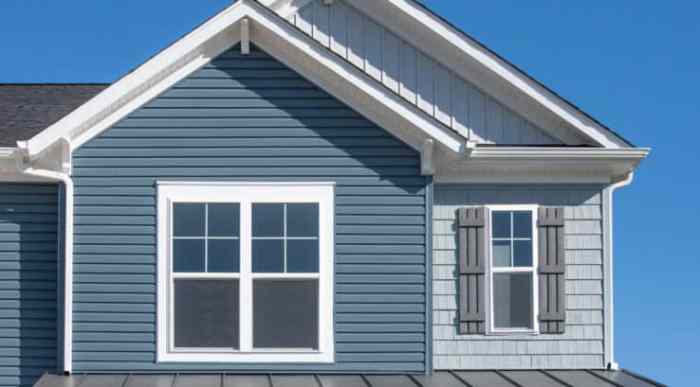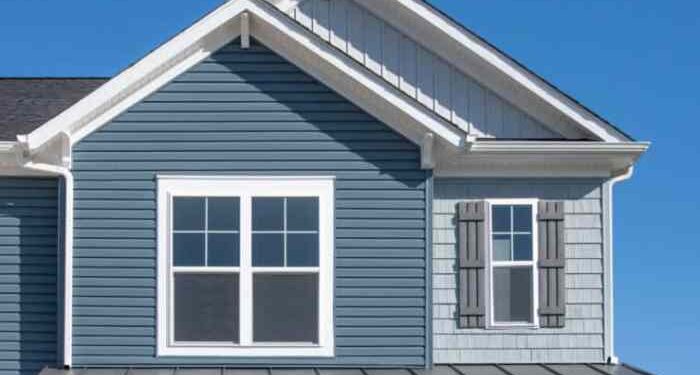When it comes to choosing the best siding for energy efficiency and insulation, there are a variety of factors to consider. From the types of materials used to the installation techniques, each detail plays a crucial role in determining the effectiveness of your home's insulation.
In this article, we will explore the different siding options available, discuss their pros and cons, and highlight key factors that impact energy efficiency. Let's dive in to find out how you can enhance your home's insulation while saving on energy costs.
Types of Siding for Energy Efficiency

When it comes to choosing siding for your home, energy efficiency is a crucial factor to consider. Different types of siding materials offer varying levels of insulation properties, impacting your home's overall energy consumption. Let's take a look at some common siding options known for their energy-efficient qualities.
Vinyl Siding
- Pros:
- Relatively affordable
- Low maintenance
- Good insulation properties
- Cons:
- Can crack or fade over time
- Not as durable as other materials
Wood Siding
- Pros:
- Natural insulator
- Timeless appearance
- Cons:
- Requires more maintenance
- Prone to rot and pests
Fiber Cement Siding
- Pros:
- Highly durable
- Fire-resistant
- Excellent insulation
- Cons:
- Can be more expensive
- Installation may require professionals
Insulated Vinyl Siding
- Pros:
- Enhanced insulation
- Improved energy efficiency
- Cons:
- Higher initial cost
- May require specialized installation
Factors Affecting Energy Efficiency
When it comes to the energy efficiency of siding, several key factors play a crucial role in determining how well a home is insulated and protected from external elements. Factors such as siding thickness, material composition, and even color can significantly impact the overall energy efficiency of a building.
Siding Thickness and Material Composition
The thickness and material composition of siding are essential factors in determining its insulation properties. Thicker siding provides better insulation by creating an additional barrier between the interior and exterior of a building. Additionally, certain materials like vinyl and insulated siding are known for their high insulation capabilities, helping to reduce heat transfer and energy loss.
Role of Color in Energy Efficiency
The color of siding can also affect energy efficiency by influencing how much heat is absorbed and retained
On the other hand, lighter-colored siding reflects more sunlight, reducing heat absorption and minimizing the need for excessive cooling. Choosing the right siding color can help regulate indoor temperatures and improve overall energy efficiency.
Insulation R-Value and Siding
Insulation R-value is a measure of the material's ability to resist heat flow. The higher the R-value, the better the insulation and energy efficiency of the material. When it comes to siding, the R-value plays a crucial role in determining how well a building retains heat in winter and stays cool in summer.Different siding materials have varying R-values, impacting their insulation performance.
For example, vinyl siding typically has a lower R-value compared to fiber cement or insulated vinyl siding. This means that homes with higher R-value siding will require less energy for heating and cooling, resulting in lower energy bills.
Comparing R-Values of Siding Materials
- Fiber Cement Siding: Fiber cement siding has a high R-value, providing excellent insulation for homes and contributing to energy savings.
- Insulated Vinyl Siding: This type of siding comes with additional insulation layers, boosting its R-value and enhancing energy efficiency.
- Wood Siding: While wood siding has a natural insulating property, it generally has a lower R-value compared to fiber cement or insulated vinyl siding.
Benefits of High-R-Value Siding
- Reduced Energy Costs: High-R-value siding helps in reducing energy consumption for heating and cooling, leading to lower energy bills.
- Improved Comfort: Homes with high-R-value siding maintain more consistent indoor temperatures, providing greater comfort for occupants.
- Environmental Impact: By reducing energy usage, high-R-value siding contributes to a lower carbon footprint and a more sustainable lifestyle.
Installation Techniques for Improved Insulation
Proper installation of siding is crucial for maximizing energy efficiency in a building. By following best practices, such as ensuring proper sealing, using insulation boards, and incorporating vapor barriers during installation, you can significantly improve the insulation properties of the siding.
Importance of Proper Sealing
- Sealing gaps and cracks in the siding helps prevent air leakage, which can significantly impact the energy efficiency of a building.
- Using high-quality sealants and insulation materials can enhance the overall performance of the siding in terms of insulation.
Insulation Boards and Vapor Barriers
- Installing insulation boards underneath the siding can provide an additional layer of thermal protection, reducing heat transfer and improving energy efficiency.
- Vapor barriers help control moisture levels within the walls, preventing condensation and mold growth that can compromise the insulation properties of the siding.
Impact of Air Gaps and Thermal Bridging
- Air gaps between the siding and the wall can lead to heat loss and decreased energy efficiency. Properly sealing these gaps is essential for maximizing insulation.
- Thermal bridging occurs when there is a break in the insulation layer, allowing heat to transfer more easily. By addressing thermal bridging during installation, you can improve the overall insulation performance of the siding.
End of Discussion
As we conclude our discussion on the best siding for energy efficiency and insulation, it's clear that making the right choice can significantly impact your home's comfort and energy savings. By understanding the various factors that influence insulation performance and energy efficiency, you can make an informed decision that benefits both your wallet and the environment.
Choose wisely and enjoy a well-insulated home all year round.
General Inquiries
Which siding material offers the best insulation properties?
Insulated vinyl siding is known to provide excellent insulation due to its added layer of insulation material.
How does the color of siding affect energy efficiency?
Lighter colors reflect heat, keeping the interior cooler, while darker colors absorb heat, leading to increased energy consumption for cooling.
What is insulation R-value and why is it important?
The R-value measures the insulation's ability to resist heat flow. A higher R-value indicates better insulation performance.




